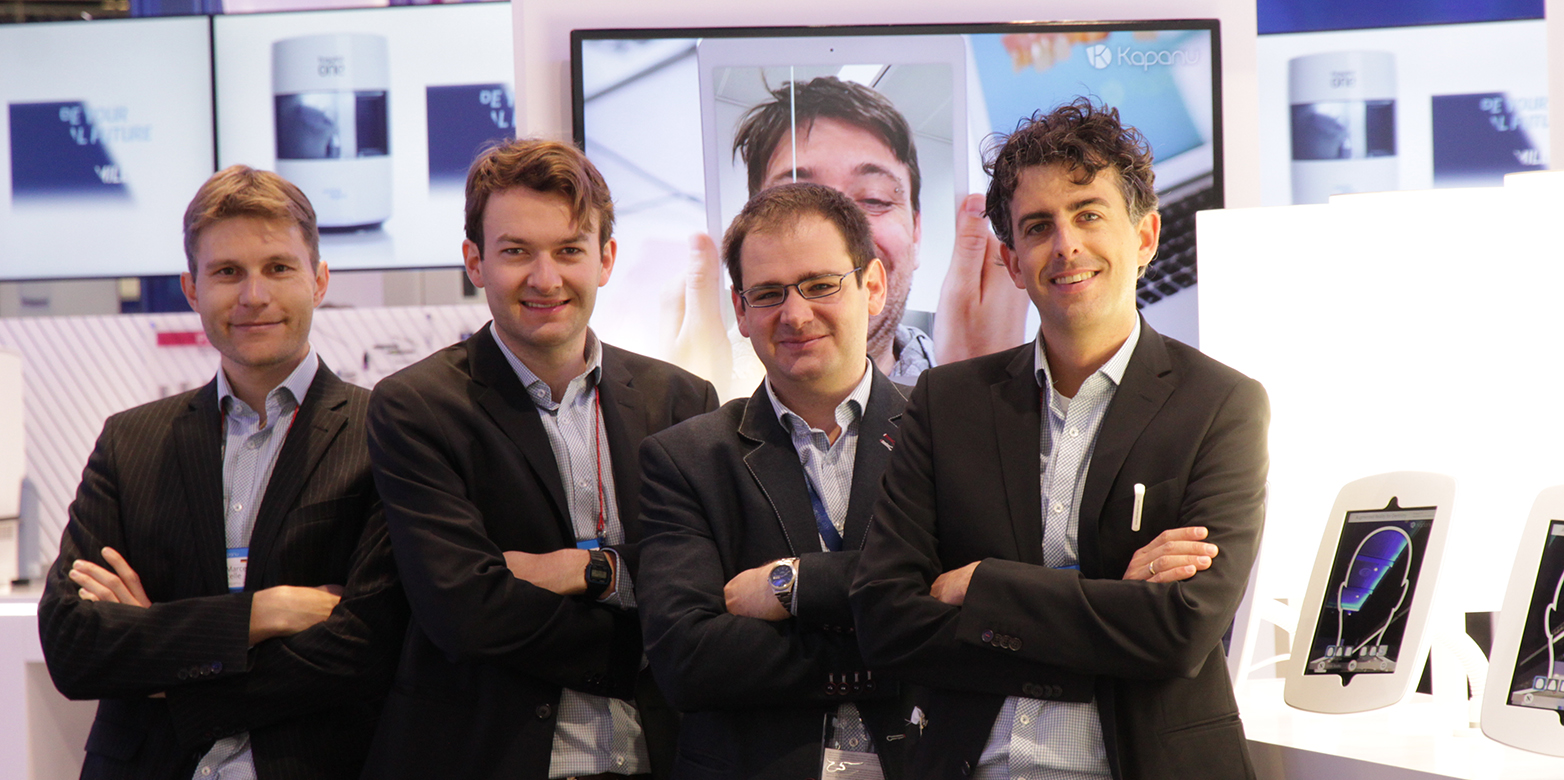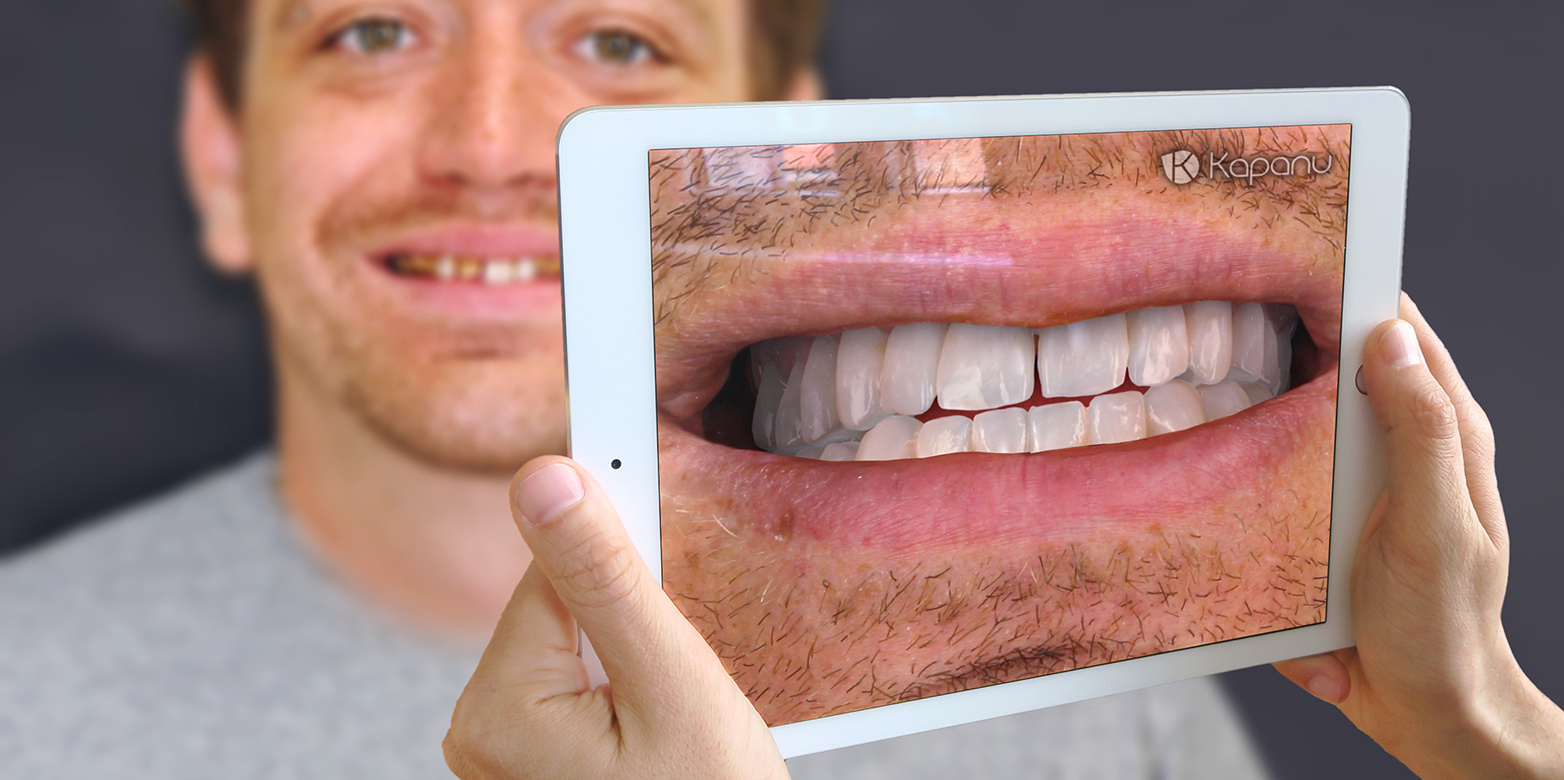A sweeter smile through Augmented Reality
In future, patients will be able to see the outcome of dental treatment even before the dentist starts working on their teeth. This is made possible by a “virtual mirror” developed by Kapanu, an ETH spin-off.

Most people find worn, broken or discoloured teeth unattractive, and many of those affected opt for cosmetic dental reconstruction using crowns or ceramic veneers, for example. However, any change to the front teeth can also have a major effect on a person’s facial expressions. To allow patients to see how their new smile will look, it is common practice nowadays to first make a plaster cast of the patient’s dentition. The dental technician then uses wax to insert any missing teeth and creates a 3D model which the patient can try out – a complicated and time-consuming procedure.
A virtual fitting
In future, the entire modelling process will be simpler and quicker thanks to new software developed by the ETH spin-off Kapanu: the “Kapanu Augmented Reality Engine”. “This software enables the patient to see within seconds the end result of the dental reconstruction,” says CEO Roland Mörzinger. This is made possible by Augmented Reality: a live video is taken of the patient’s own teeth, on which a virtual model of the new set of teeth is superimposed. It is hardly impossible to distinguish between the virtual teeth and the genuine teeth – even if the person in the camera turns their head or speaks. In addition, patients can try out not just one alternative, but as many as they like – which is not feasible with a wax model. With just a few mouse clicks, it is possible to adjust the length, width, shape and shade of the teeth. The patient is able to see in real time how this alters their facial appearance and then choose whichever variant they like best. Thanks to the “virtual fitting”, communication between the dentist and the patient is also more straightforward: “Expectations can be better managed from the start, so as to avoid any disappointments,” says Mörzinger.
Link to 3D databases
To dynamically alter the virtual image of the teeth, the software needs to access an information base. This can be a database containing 3D models of naturally attractive sets of teeth, as already used in dentistry. The software processes the data and displays different options, which are not yet precisely matched to the patient’s own bite, however. To be able to do so, a 3D scan of the oral cavity first has to be performed as well.
These scans are already being carried out in some dental practices, either directly in the mouth using specialised equipment or by imaging the plaster cast of the patient’s teeth with a 3D scanner. Once the patient has chosen their dream set of teeth with the help of the Kapanu software, the data are then fed into the dental technician’s 3D modelling software. After processing, the data are sent to a machine that makes the replacement teeth.
The idea of developing the “Kapanu Augmented Reality Engine” came from a KTI project run by the ETH Computer Graphics Lab. Software engineer Mörzinger and his team originally wanted to develop a 3D facial scanning technology that arose from a collaboration between the Laboratory and Disney Research for medical applications. After conducting market research, however, the researchers decided to apply the concept of a virtual mirror to dentistry and develop totally new software for this purpose. Mörzinger, his colleague Marcel Lancelle and various other project team members founded the spin-off Kapanu, which soon attracted financial support from the company Ivoclar Vivadent, a leading global provider of dental products and systems.
Strong demand from dentists
Last March, Kapanu unveiled its system for the first time at the International Dental Show (IDS) in Cologne, the world’s biggest exhibition for dental technology. Visitors to the exhibition – mainly dentists, dental technicians or dental hygienists – were able to try out the new technology themselves using a demo app. “The feedback was overwhelming,” Mörzinger reports. Various companies expressed interest in a collaboration, and hundreds of dentists wanted to buy the software.
The software is not yet available for end users, even though the technology is ready for market. “We have targeted the business-to-business segment, focusing mainly on developing the technology rather than marketing,” Mörzinger says. This bet has paid off: “Within the space of just 18 months, we have managed to become the leading provider of Augmented Reality in the dental industry”. That’s because there are no other comparable systems available.
In June, Kapanau was acquired by Ivoclar Vivadent. This will ensure that the technology will continue to be refined and made ready for market. Kapanu will still operate as a separate company, however, and will push ahead with the development of new digital applications for the dental industry.

